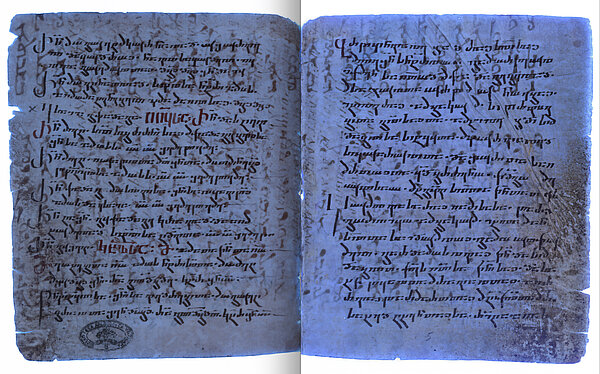It was a chance discovery made by Timo Frühwirth and Sandra Mayer, literary historians at the Austrian Academy of Sciences (OeAW). While working on a digital edition of the British-American poet W. H. Auden's correspondence with the Welsh-Austrian writer and journalist Stella Musulin, they noticed colourless indented typewriter impressions of lines of poetry contained in two documents. Through the use of computer-vision technologies, a previously unknown version of an Auden poem has now been reconstructed.
Further Discoveries Possible
This sensational discovery has far-reaching significance, not only for international Auden research. The impressions result from the papers’ original use as ‘backing sheets’, which were inserted into a typewriter below those sheets of paper on which Auden typed his poetry. "This was a common practice in the typewriter age," says Sandra Mayer, "I expect that we will discover many more such sheets in Auden's archival papers. Moreover, this could also be relevant with regard to other 20th-century authors."
The newly discovered text is a previously unknown, otherwise lost, early version of "Epithalamium", a wedding poem Auden wrote to mark the occasion of his niece Rita's wedding in 1965. "Based on diary entries, we think that this is the first version of the poem he typed on a typewriter. He had initially written his notes in pencil. This helps us to analyse the way in which Auden worked poetically," says Mayer.
Forensic Method Makes the Invisible Visible
In cooperation with the University of Technology Vienna (TU Wien), computer-vision methodology has been used to make Auden’s poem visible. "Photometric Stereo is a technique that is already used in the field of cultural heritage, for example, to render visible reliefs on the backs of Etruscan mirrors," explains Timo Frühwirth: "But this technology has never been applied to literary archive papers from the 20th century. Deciphering the text was particularly difficult, since Auden overwrote the ‘backing sheet’ with yet another text. So, there are multiple overlapping layers - which is why the writing is illegible to the naked eye."
How could they be made legible after all? "In a series of individual images, the sheet of paper was illuminated from a number of different angles, drawing on the visual information created by means of raking light as it is also used in forensics to make surface structures visible. Simon Brenner from the Computer Vision Lab at the University of Technology Vienna (TU Wien) used this information to mathematically create a 3D surface model," says Frühwirth.
W.H. Auden in Austria
W. H. Auden lived and worked in Austria for up to six months at a time, from April to October, during the last 15 years of his life - in Kirchstetten, Lower Austria, where he is also buried. In the night of 28/29 September 1973, Auden died in his hotel room in Vienna after a poetry reading at the Palais Pálffy. This year marks the 50th anniversary of W. H. Auden’s death.




